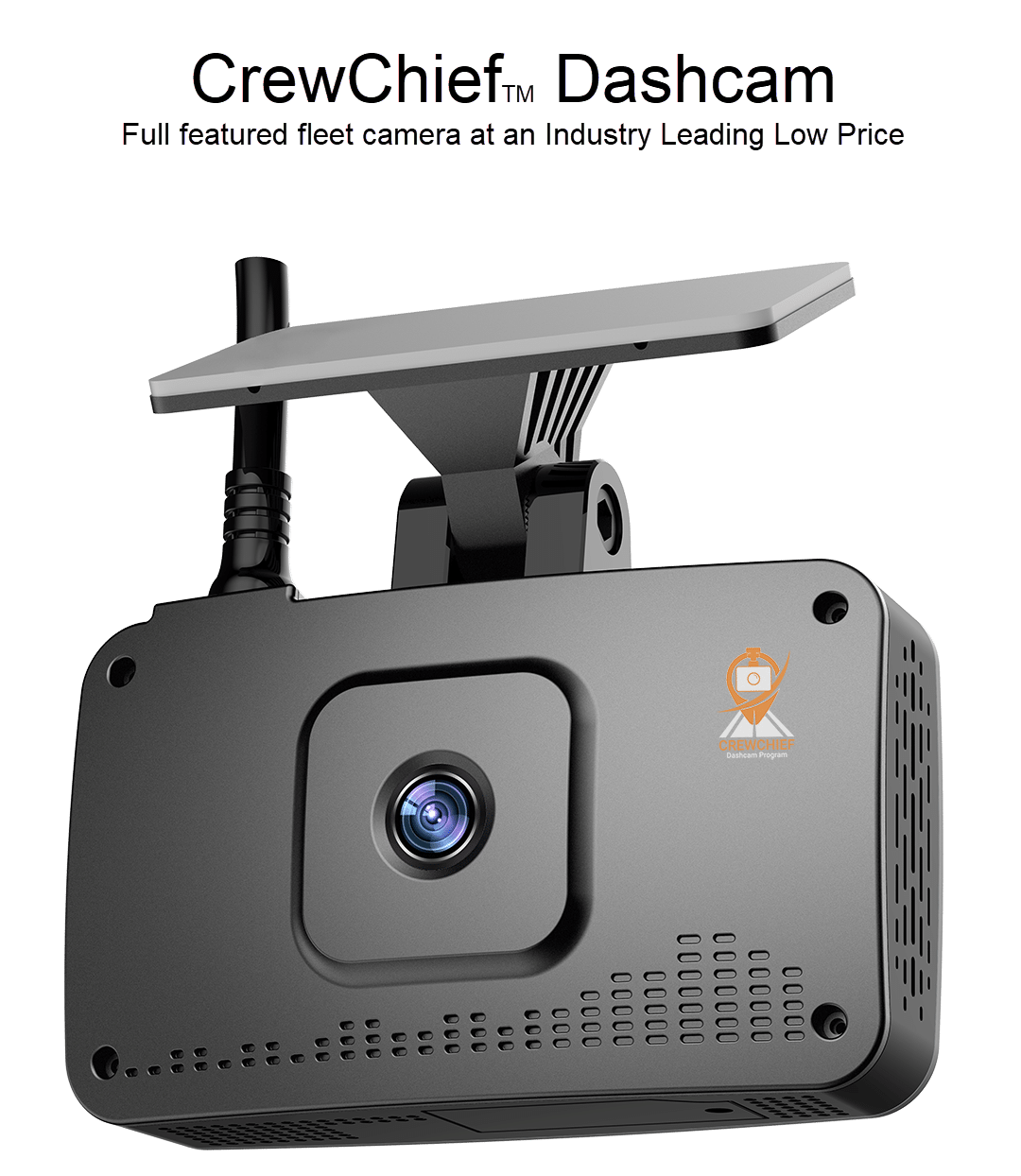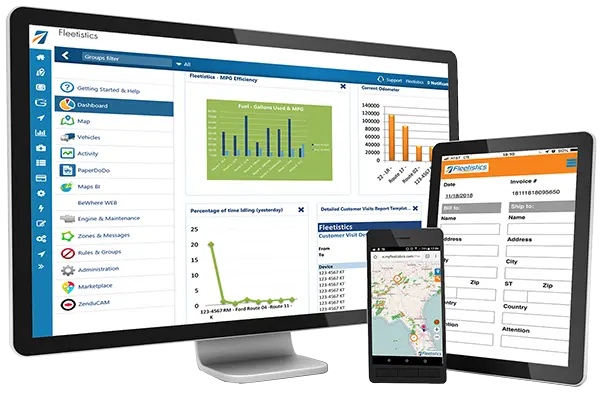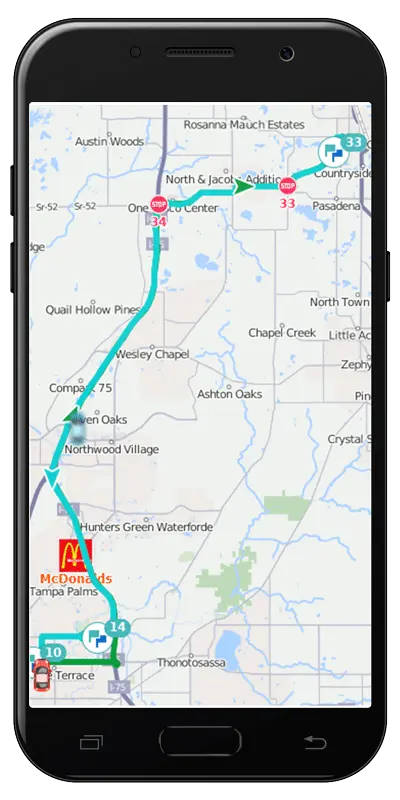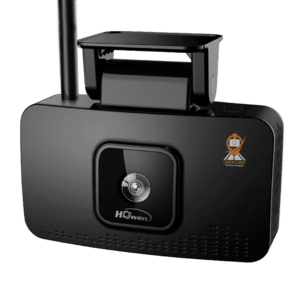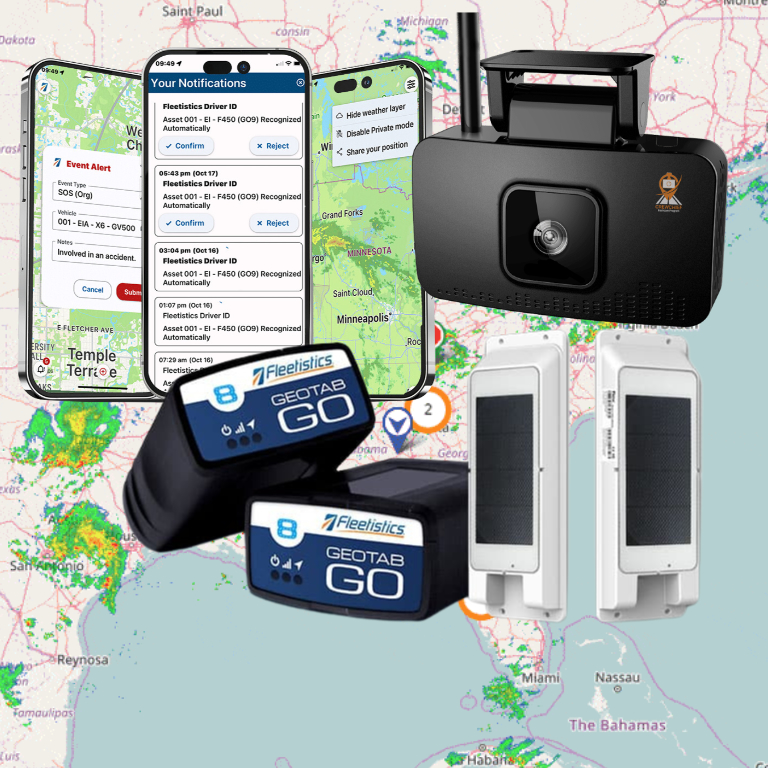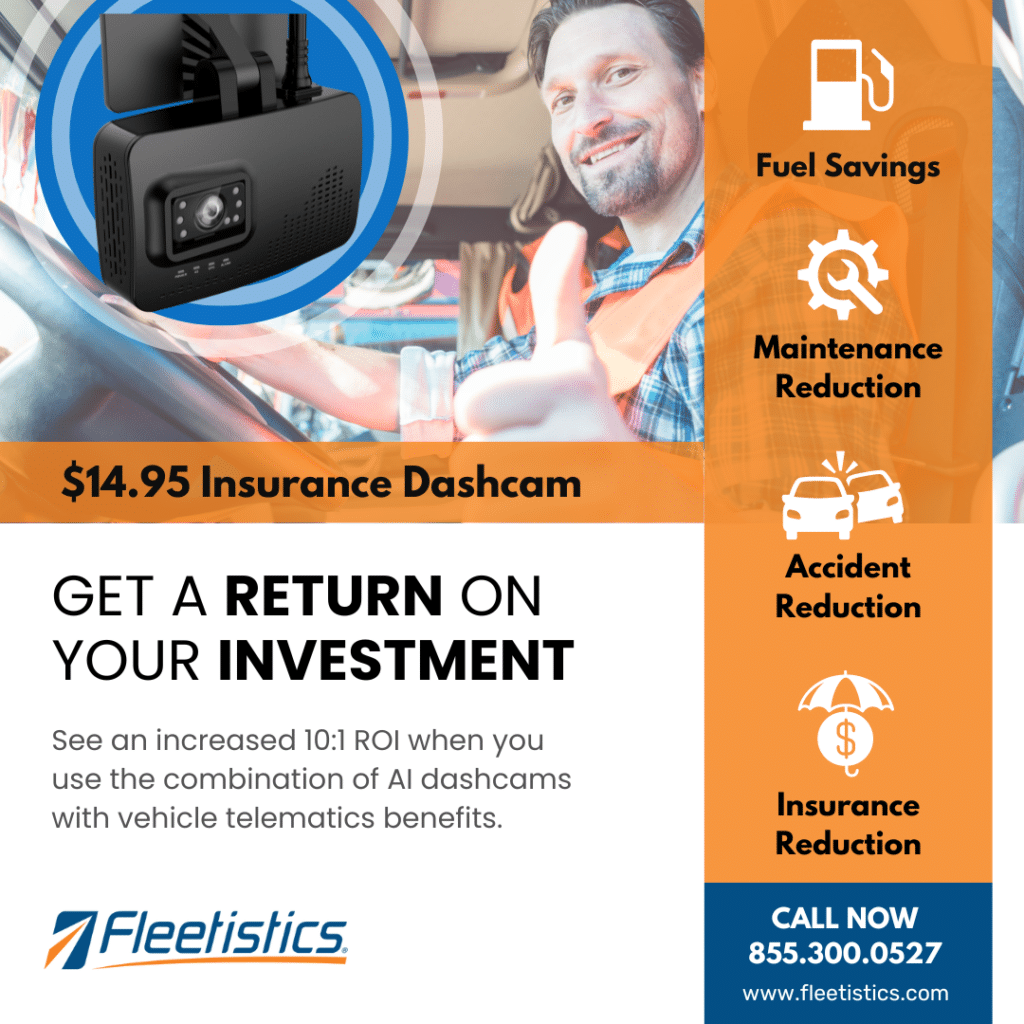Choosing the right commercial fleet dashcam technology today can be as hard as ordering off the 15-page menu at The Cheesecake Factory. There are many vendors that offer a plethora of options to choose from. Instead of focusing on brands of dashcams, in today’s blog, we will discuss some of the different features and benefits of different fleet dashcam technology to help guide you to choose the best dashcam for your fleet needs.
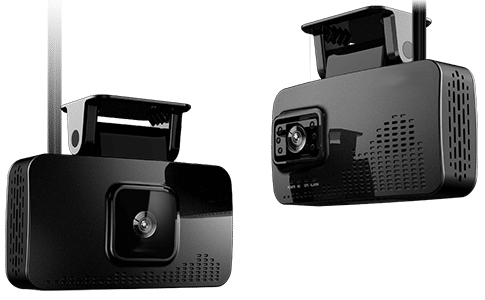
Fleet Dashcam “Must Have” List
The first step in determining what dashcam technology will work best for your fleet is to weed through the must haves and don’t need items. We recommend that the personnel involved in selecting the technology get together and determine the top 3-4 features that are going to maximize productivity and profitability with fleet dashcams. Some examples are front/forward facing cameras, AI technology, and safety vs. Insurance features. Having too many must haves may make it impossible to move forward.
If you start with too many requested features, there may be no single solution that fits the mold. Once the must haves have been determined, it is also good to have a few wants or would like to have items so that as your organization grows, you know the fleet dashcam technology can continue to grow with you. This is an investment and the dashcams should continue to meet your ever-expanding company needs. We recommend this two-step process to our clients, and it is one of the reasons that Fleetistics offers a variety of options.
One size does not fit all.
Your Goals For Fleet Dashcam Technology
Understanding what your goals are will help guide your organization toward the closest fit fleet dashcams available in today’s market. There are four traditional types of cameras:
- Forward-Facing Mounted on the windshield. Designed to capture collisions.
- Dual-Facing Mounted on the windshield. Designed to capture collisions as well as in-cab activity.
- Exterior Mounted on the exterior of the vehicles to capture a 360º view of the surrounding road.
- Interior – Typically mounted in various places inside the vehicle or trailer to keep passengers or cargo safe and secure.
Once you understand these basics of fleet dashcam technology, there are additional features available and things to consider from a benefits perspective. If your organization is simply looking for dashcams for insurance purposes then a simple dual-facing camera would work without the bells and whistles.
If the objective is safety, then a more robust solution that includes features such as AI (artificial intelligence) technology to pinpoint coachable behavior like cell phone usage, falling asleep at the wheel, and other distracted driving would be more appropriate. Back-up cameras are available with some systems as well.
Additional Considerations
Other considerations to consider are as follows:
- Installation – How difficult will the installation be? Do we have capable staff members or should we hire an expert installation technician (recommended)?
- Storage needed – Some solutions (but not all) pool data meaning if one vehicle goes over but another is under, you would not go over the total data plan. Other solutions have set data plans per camera and may incur overage charges.
- Reports – What type of reporting is expected from the solution? Many solutions offer event reporting based on programmed rules.
- Integration – Is there an API available to use the camera data in other systems you use?
Investing For Maximum ROI
Finally, it is also important to consider the investment. Dashcam data typically ranges from a low end of $13.00 per month to as high as $50 or more per month (per vehicle). That does not include the dashcam hardware cost. There are some SaaS models available that have a lower initial investment and build the hardware price into the monthly cost per vehicle.
Fleetistics recently introduced the first ever Pay-as-You-Go plan. This offers the same functionality as our standard plan without automatic uploads at a very low monthly base rate + cost per MB used. This is a great option for organizations new to cameras that aren’t sure how much data they will use, and don’t plan to look at the camera data unless it is needed like in the event of a collision. It allows you to pay only for the data you actually use.
No matter what the needs of your organization may be, there is fleet dashcam technology out there to meet your needs. Again no one size fits all, so it’s important to weigh the options and make an educated decision. We encourage our clients to utilize the tools provided and we are always here to help guide you in the best direction. For more information, please contact us at 877-467-0326 or fleetistics.com.







